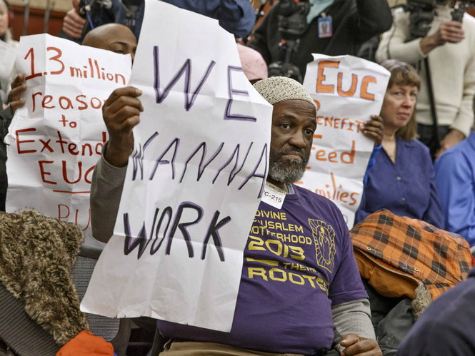
Friday’s disappointing jobs report provided a bookend to the false hope of another “recovery summer.” The number of jobs created in August fell short of economists’ expectations by more than 100,000. The weak gain in August also snapped a six-month streak of more than 200k jobs gains each month, itself an anemic goal. For a sixth year, hopes of an economic turnaround in summer went out with the Labor Day trash.
Just over a month ago, the Washington media was fretting that Democrats wouldn’t get “credit” for the improving economy. The economy had clocked several months of job gains above 200k, a level understood in previous Administrations to mean “keeping up with population growth.” The economy had experienced a sharp contraction in the 1st Quarter, but the media explained that this was due to cold weather, a phenomenon previously known as “winter.”
As in other years, there was just enough barely positive economic data to string together a narrative of an economy poised for a big breakthrough. Stock market fan-zine Business Insider pioneered an entire genre of “economic breakout” stories this summer, finding an ETF-lining in every small nugget of news that wasn’t explicitly negative.
Friday’s jobs report was yet another reminder that, no matter how many shiny data points one weaves together, the underlying economy is, at best, stagnant. Even the headline report that 140k jobs were added in August obscures the full picture of the weak economy. A significant portion of the jobs created over the last several years are part-time or in low-wage industries. Wages are flat and the average workweek for many Americans continues to shrink. A record 93 million Americans are no longer in the labor force.
Last week, the Federal Reserve released its latest survey of household finances in the US. The report confirmed what people feel in their daily lives. Over the past three years, those in the middle or lower classes saw their income fall or stay flat. Only those in the highest income groups experienced real financial gains. This is the result of two parallel economies operating today. In one, the Fed creates and injects hundreds of billions of dollars into the financial sector, lifting stock prices and send many assets to atmospheric heights.
Over the past several years, economic reporting has fallen into a similar pattern. For a certain number of months, there is mildly positive data in certain parts of the economy. These were often the now mythical “green shoots” widely touted during the early years of the Obama Presidency. Before long, however, there would be an economic report that would upset this budding narrative.
Sometimes it would be a terrible GDP number. Other times some dramatic fall-off in factory orders or consumer spending. Friday, it was a terrible jobs report that fell far below expectations. The indicators may change, but the underlying truth was the same; the economy is dangerously weak.

COMMENTS
Please let us know if you're having issues with commenting.